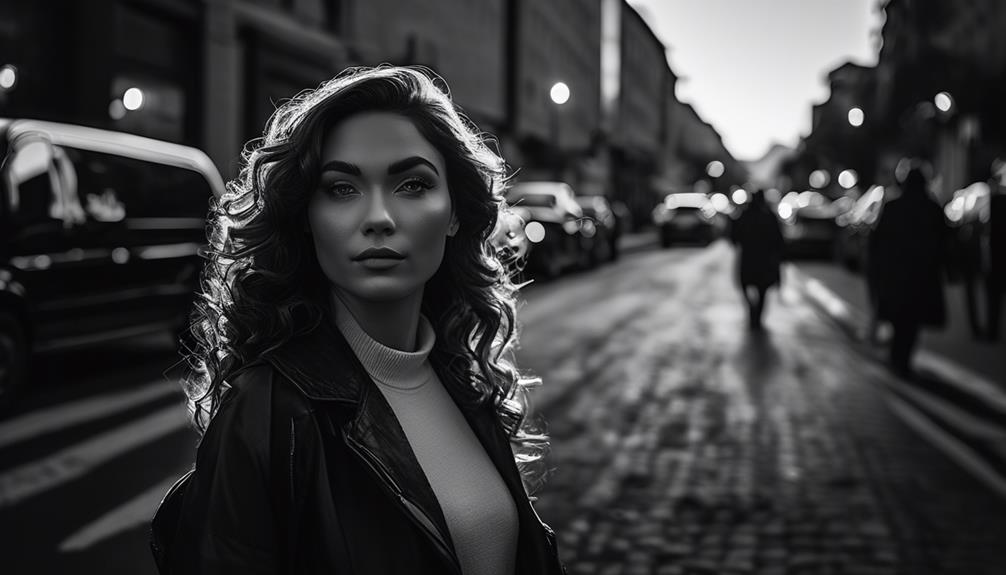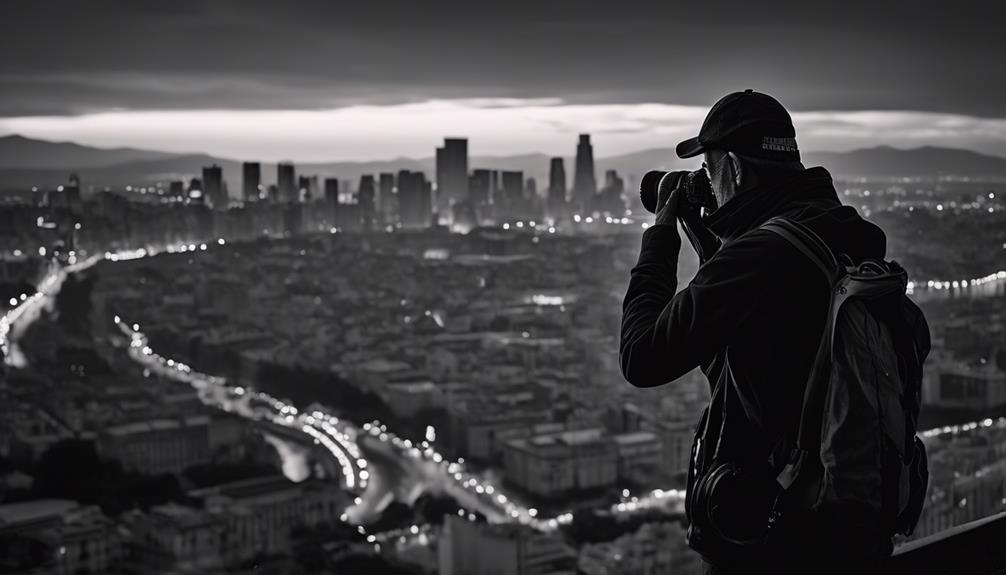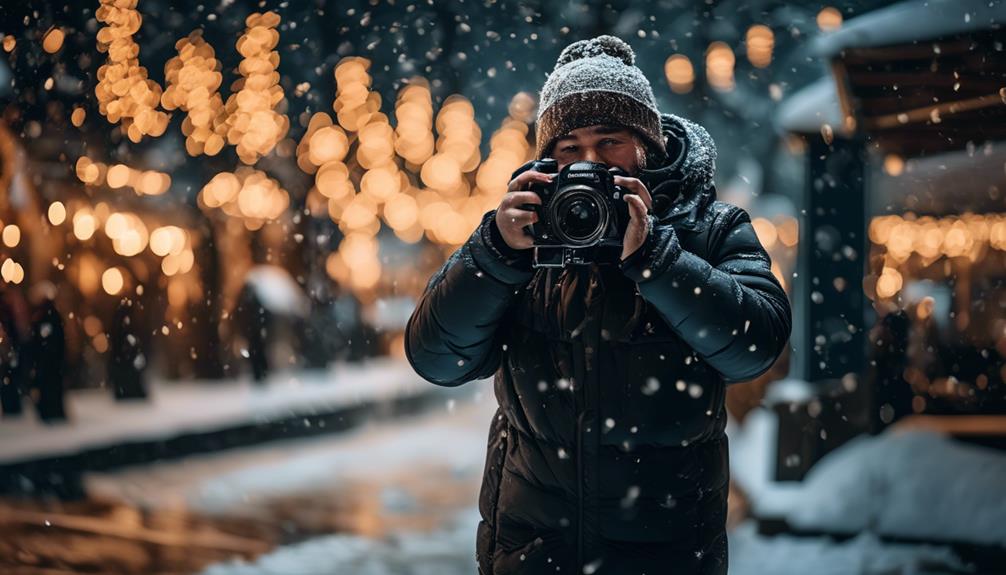Please note this post may contain affiliate links picked by me (Jay) that I have deemed may be of interest or relevant to you the reader of this.
These links do not affect the cost of the thing if you decide to purchase but i may get a little money if you choose to purchase.
For more information on my affiliate link policy click here.
They say that a picture is worth a thousand words, and as a photographer, I couldn't agree more.
The world of photography is vast and diverse, with each genre offering its own unique challenges and rewards.
Whether it's capturing the stunning beauty of landscapes, the raw emotion of portraits, the vibrant energy of street scenes, the untamed grace of wildlife, or the intricate details of the smallest subjects in macro photography, there's always room to elevate your skills and take your artistry to new heights.
But how do you navigate through these various genres and become a master of them all?
Well, that's exactly what we're going to explore in this discussion.
So, grab your camera and join me on this journey as we uncover the secrets to elevating your photography skills across different genres.
Key Takeaways
- Mastering editing techniques is crucial for enhancing the mood and depth of your landscape photography.
- Experiment with different lighting techniques and strive for innovation in composition to capture authentic and striking portraits.
- Street photography requires being present, observant, and anticipating ever-changing scenes to capture authentic and unfiltered moments of everyday life.
- In wildlife photography, approach subjects with respect, maintain a safe distance, and study animal behavior to capture authentic moments without interference.
Landscape Photography
Landscape photography allows me to capture the breathtaking beauty of nature, immersing myself in stunning vistas and capturing awe-inspiring moments for others to experience. It's a genre that holds a special place in my heart, as it allows me to showcase the grandeur and serenity of the natural world.
But capturing stunning landscapes goes beyond simply pointing and shooting. To truly elevate your landscape photography skills, it's important to master editing techniques and composition tips.
Editing techniques play a crucial role in transforming a good photograph into an extraordinary one. One editing tool that can greatly enhance the mood and atmosphere of a landscape image is the use of color grading. Experimenting with different color schemes can evoke different emotions and create a more visually captivating image. Additionally, adjusting the contrast and saturation levels can help bring out the details and add depth to your photographs.
Composition is another key aspect of landscape photography. One composition tip to keep in mind is the rule of thirds. By dividing your frame into nine equal parts, both horizontally and vertically, and placing key elements along these lines or at their intersections, you can create a more visually pleasing and balanced image. Additionally, using leading lines, such as a winding path or a river, can draw the viewer's eye into the photograph and create a sense of depth and movement.
Portrait Photography
Portrait photography is a captivating art form that allows me to capture the unique essence and personality of individuals, freezing moments in time that tell their stories.
When it comes to portrait photography, I rely on a combination of lighting techniques, poses, and expressions to create stunning and innovative images.
To bring out the best in my subjects, I experiment with different lighting techniques. Whether it's using natural light, studio lighting, or even unconventional light sources, I strive to create a captivating play of light and shadow that enhances the mood and brings out the features of the individual. The interplay between light and darkness adds depth and dimension to the portraits, making them visually striking and memorable.
Poses and expressions play a crucial role in portrait photography. I encourage my subjects to express themselves authentically, capturing their true emotions and personalities. From classic poses to unconventional angles, I use various techniques to create visually interesting compositions. By directing my subjects and guiding them through different poses, I'm able to capture their unique characteristics and create portraits that truly capture their essence.
Innovation is key in portrait photography, and I constantly seek new ways to push the boundaries and create captivating images. Whether it's exploring new lighting techniques, experimenting with unconventional poses, or encouraging my subjects to express themselves in innovative ways, I strive to create portraits that stand out from the crowd.
Street Photography
After capturing the unique essence and personality of individuals through portrait photography, I'm excited to explore the dynamic world of street photography, where I can capture the raw and unfiltered moments of everyday life. Street photography is a genre that allows me to document the world around me in a documentary style, capturing candid moments that tell a story.
What makes street photography so fascinating is its ability to capture the authenticity of life. It's about capturing people in their natural environment, going about their daily routines, and capturing the emotions and interactions that make up our society. The streets become my canvas, and the people I encounter become the subjects of my art.
In street photography, there's no posing or staging. It's about being in the right place at the right time, ready to capture that split-second moment that encapsulates a story. It requires a keen eye, quick reflexes, and the ability to anticipate and react to the ever-changing scenes unfolding before me.
One of the joys of street photography is the element of surprise. You never know what you'll encounter or what moments will unfold before your lens. It's about being present and observant, always ready to capture that decisive moment that will make your photograph stand out.
Through street photography, I'm able to explore the diversity of the human experience. From bustling city streets to quiet alleyways, each location offers a unique perspective and a chance to capture the essence of a particular place and time.
Wildlife Photography
With a camera in hand and a heart full of excitement, I venture into the captivating world of wildlife photography, ready to capture the untamed beauty of nature. As I step into the wilderness, I'm surrounded by the symphony of chirping birds and rustling leaves. The air is crisp, carrying the scent of moss and damp earth. The sun peeks through the dense canopy, casting dappled shadows on the forest floor. In this enchanting setting, I prepare myself to witness the wonders of the animal kingdom.
To ensure ethical practices in wildlife photography, I approach my subjects with respect and caution. I maintain a safe distance, allowing them to behave naturally without interference. I never disturb their habitat or manipulate their behavior for the sake of a better photograph. Instead, I focus on capturing their authentic moments, revealing their true essence and beauty.
Here are a few tips for capturing wildlife behavior in photographs:
- Patience is key: Wildlife photography requires patience and persistence. Spend time observing your subjects and anticipate their actions. Be ready to capture those fleeting moments of interaction or movement.
- Study animal behavior: Understanding the behavior of the animals you photograph allows you to anticipate their actions. This knowledge helps you compose your shots and capture their unique characteristics.
- Use a telephoto lens: A telephoto lens allows you to capture close-up shots while maintaining a safe distance. It also helps to isolate your subjects from the surrounding environment, creating a stunning visual impact.
As I immerse myself in the world of wildlife photography, I'm constantly amazed by the diversity and beauty that surrounds me. Through ethical practices and a deep understanding of wildlife behavior, I strive to capture the remarkable moments that unfold in the untamed realm of nature.
Macro Photography
Macro photography opens up a whole new world, allowing me to capture the intricate details and hidden beauty of small subjects. It's like exploring a magical realm where every tiny detail becomes a work of art. In order to excel in macro photography, close up subject selection and mastering lighting techniques are crucial.
When it comes to close up subject selection, the possibilities are endless. From delicate flowers to fascinating insects, the world of macro photography unveils a whole new dimension of beauty. The key is to carefully choose subjects that have interesting textures, patterns, or colors. By zooming in on these small details, you can create captivating images that will leave viewers in awe.
In addition to subject selection, mastering lighting techniques is essential for capturing stunning macro shots. Lighting plays a crucial role in highlighting the intricate details and textures of your subject. One effective technique is to use diffused light, which softens the shadows and brings out the finer details. You can achieve this by shooting on a cloudy day or using a diffuser to soften the harsh sunlight. Another technique is to use backlighting, which creates a beautiful glow around the subject and adds depth to your images.
To paint a clearer picture, here's a table summarizing the key aspects of close up subject selection and lighting techniques for macro photography:
| Close Up Subject Selection | Lighting Techniques for Macro Shots |
|---|---|
| Interesting textures, patterns, or colors | Diffused light for softening shadows |
| Delicate flowers | Shooting on a cloudy day or using a diffuser |
| Fascinating insects | Backlighting for a beautiful glow and added depth |
With the right subject selection and lighting techniques, macro photography can take your skills to new heights. So, grab your camera, explore the world of small subjects, and capture the hidden beauty that awaits. Get ready to amaze your audience with innovative and mesmerizing macro shots!
Frequently Asked Questions
What Are the Essential Camera Settings for Capturing Stunning Landscapes?
When it comes to capturing stunning landscapes, the right camera settings can make all the difference.
To bring out the beauty of the natural world, I recommend using a small aperture (like f/16 or higher) to achieve a wide depth of field.
Additionally, a low ISO setting will help maintain image quality and reduce noise.
Lastly, don't forget to use a tripod to ensure sharpness in your landscape shots.
With these camera settings, you'll be able to capture breathtaking landscapes that will leave viewers in awe.
How Can I Effectively Pose and Direct My Subjects in Portrait Photography?
When it comes to portrait photography, nailing the right poses and directing your subjects is key. To bring out their best, try experimenting with different angles and poses, encouraging them to relax and be themselves. Don't be afraid to give direction and offer suggestions.
Lighting is also crucial in capturing stunning portraits. Play with natural light or experiment with different lighting setups to create unique and impactful images.
With the right posing techniques and lighting tips, your portrait photography skills will soar to new heights.
What Are the Best Techniques for Capturing Candid Moments in Street Photography?
Capturing candid moments in street photography requires a keen eye and quick reflexes. Here are some tips for capturing spontaneous moments in documentary photography:
- Be patient
- Blend into the surroundings
- Anticipate the action
To capture authentic emotions in wedding photography, try using a telephoto lens for discreet shots and focus on the small details that reveal genuine connections. These techniques will elevate your photography skills and bring innovation to your work across various genres.
How Can I Ensure the Safety of Both Myself and the Wildlife While Photographing in the Wild?
When photographing wildlife, ensuring the safety of both myself and the animals is of utmost importance. Wildlife photography ethics play a crucial role in this.
By respecting their natural habitat and maintaining a safe distance, we can capture stunning images without causing harm. Additionally, using wildlife photography techniques such as telephoto lenses and camouflage can help us get closer shots without disturbing the animals.
Let's remember that our goal is to capture the beauty of nature while preserving it for future generations.
What Are the Recommended Equipment and Settings for Achieving Sharp and Detailed Close-Up Shots in Macro Photography?
To achieve sharp and detailed close-up shots in macro photography, it's important to have the right equipment and settings.
Firstly, I recommend using a macro lens for better magnification and focusing capabilities.
Secondly, adjust your camera settings to a narrow aperture (higher f-stop) to increase the depth of field and achieve sharpness throughout the image.
Lastly, experiment with different lighting techniques to enhance the details and create stunning bokeh effects.
These tips will take your macro photography skills to the next level!
Conclusion
In conclusion, photography is a wonderful art form that allows us to capture the beauty of the world around us in various genres. Whether it's the vast landscapes, the intimate portraits, the bustling streets, the fascinating wildlife, or the intricate details of the macro world, there's something for everyone to explore and master.
Did you know that photography has been proven to reduce stress levels by 68%? So grab your camera and start capturing moments that bring you joy and tranquility today!


